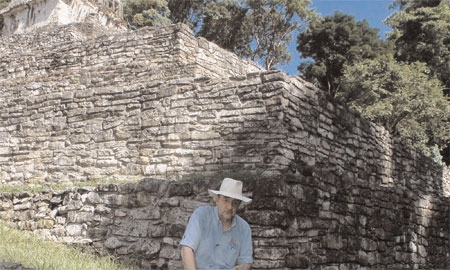The National Institute of Anthropology and History, or INAH, was established in 1939 to protect, preserve, and disseminate the archeological and historical heritage of Mexico. The institution authorizes the investigation or restoration of archaeological sites and has a monopoly on the conservation of archeological objects. It works together with the national park service and U.S. universities to manage national parks in terms of conservation, records maintenance, and tourism. INAH recently received the award for best cultural management of a set of Archaeological Sites and Premises dedicated to research and tourism.
INAH is responsible for about 110,000 historical monuments and 29,000 archeological sites that were discovered in Mexico. In addition to managing the sites and monuments, the institution also acts responsibly to ensure the safety of tourists, and to maximize research. “In the case of Teotihuacan, where we found a tunnel 46 feet deep, it is necessary to take certain protective measures and research,” says Alfonso de Maria y Campos, general director of INAH. “It would be a betrayal to open a site that is not supported by research, and to not build up a scientific base that can be criticized, published and discussed.”
INAH has a very strong academic structure and engages in practices which ensure that the operational sites offer a range of services and are sustainable. “In Michoacan, for example, many jobs were generated,” he says. “The advantage is that the women are very skilled with their hands, they have been given jobs through the generation of crafts, leading to a second family income. To date, we have generated 70,000 indirect jobs during the past two years thanks to this project.”
INAH has also established an alliance with Google, which means that INAH will be the first institution that has a layer in Google. “We create groups of information available to the user,” says Mr. de Maria y Campos. “But through the website alone, we cannot reach everyone, so we advise you to Google and come to the conclusion that we need to create concepts, to raise awareness about INAH and all information that people need.”
| IN ADDITION TO ITS ACADEMIC ROLE, INAH IS ALSO RESPONSIBLE FOR MEXICO’S 110,000 HISTORICAL MONUMENTS AND 29,000 KNOWN ARCHEOLOGICAL SITES |
The institution is intent on generating tourism through journalism and permanent investigation of the sites. INAH aims to communicate with the public through letters, television series, and newspaper articles in order to inform people of the historical and anthropological issues, indigenous people, and projects that are being done on the sites.
“We have the task of convincing you that culture does sell, and even if you know how to sell, it requires some knowledge, patience, and necessary conditions,” comments the institute’s general director.
INAH has held Mexican exhibits in the U.S. and as far away as Japan. Now, it plans to open a Mayan museum in Quintana Roo’s Hotel Zone, called the Cancun Archeological Museum, planned accordingly with the countdown of the Mayan calendar which is said will signal the Apocalypse.
“This city does not have a single museum, so we have a great interest not only for tourists but also for the students, although again, it has to be sustainable,” Mr. de Maria y Campos says. “We are holding several Mayan exhibitions in North America, and specifically in Canada. We will bring an exhibition of the Mayan calendar to the museum of the civilizations of Montreal, together with a discussion of the Mayans.”
2010 was named as the year of Mexican archeology, and the unparalleled work done so far by INAH can attest to the key role the institution has played in preserving the cultural heritage of Mexico.

0 COMMENTS